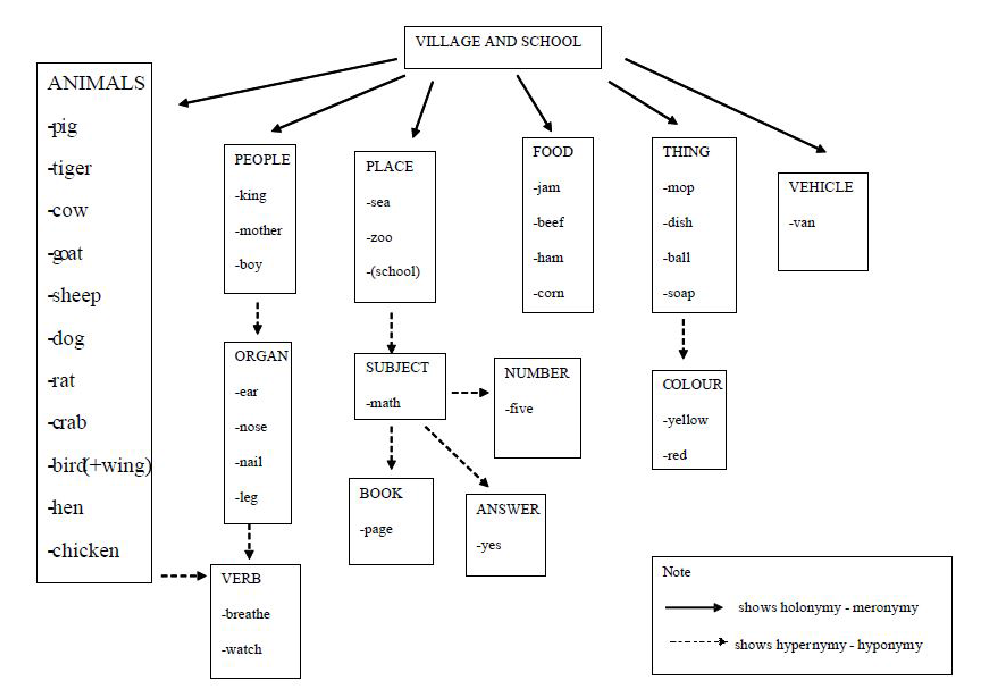The use of semantic field approach to enhance English vocabulary development of Prathomsuksa 4 students at Betty Dumen Border Patrol Police School, Phayao Province, Thailand
Main Article Content
Abstract
This research aimed to analyze numbers of English vocabulary proficiency in Prathomsuksa 4 students after using the semantic field instruction, to present semantic field teaching instruction contributing to the development of the students' English vocabulary retention proficiency, and to analyze the students' satisfaction towards the teaching instruction. The participants of the research were 12 Prathomsuksa 4 students, at Betty Dumen Border Patrol Police School. The instruments of this study included lesson plans using semantic fields to develop students' vocabulary proficiency, pre-test and post-test, and a questionnaire. The study found that the English vocabulary proficiency of the participants had a statistically significant increase (p = 0.01) after the use of the English vocabulary instruction process through the semantic field and the relations between words in the semantic field could contribute to the students' vocabulary retention with the statistical better performance in recalling the meaning of the vocabulary. Furthermore, the students' attitude towards learning and teaching English were labeled as ``Extremely Satisfied''.
Article Details
References
R. M. Mapesos, Traditional Approach, Available online in January 23, 2020, Available from: https://www.researchgate.net/publication/321134079_Traditional_Approach
Which is Best: Teacher-Centered or Student-Centered Education? Available online in April 23, 2020, Available from: https://resilienteducator.com/classroom-resources/which-is-best-teacher-centered-or-student-centered-education/
M. Khatib, A New Approach to Teaching English Poetry to EFL Students, Journal of Language Teaching and Research 2 (1) (2011) 164-169.
A. Khalid, M. Azeem, Constructivist Vs Traditional: Effective Instructional Approach in Teacher Education, International Journal of Humanities and Social Science 2(5) (2012) 170-177.
X. Gang, A Study on English Vocabulary Learning Strategies Used by Chinese College Students, Studies in Literature and Language 9 (1) (2014) 111-116.
M. Esbrí, Applying semantic frames to effective vocabulary teaching in the EFL classroom, FÒRUM DE RECERCA, 2014, pp. 743-752.
H. Syarif, Linguistics and the English Language Instruction, Lingua Didaktika 10(1) (2016) 50-59.
D.A. Wilkins, Linguistics in language teaching, London: Arnold, 1972.
B. Kanoksilapatham, A.Khamkhien, English Vocabulary Instruction via Educational TV Programs in Retrospect, Referred Journals of Language Teaching and Learning 27 (2012) 69-88.
C. Guo, The Application of Semantic Field Theory in College English Vocabulary Instruction, Chinese Journal of Applied Linguistics 33(3) (2010) 50-62.
T. Phuriudomseth, The Study of English Vocabulary Achievement and Retention of Mathayomsuksa 3 Students of Patumwan Demonstration School Srinakharinwirot University Leaning through the Use of Semantic Field Approach, Master Degree Thesis Srinakharinwirot University, 2010.
C. Gao, B. Xu, The Application of Semantic Field Theory to English Vocabulary Learning, Theory and Practice in Language Studies 3(11) (2013) 2030-2035.
C. Wangru, Vocabulary Teaching Based on Semantic Field, Journal of Education and Learning 5(3) (2016) 64-71.
G. Boran, Semantic fields and EFL/ESL teaching, International Online Journal of Education and Teaching (IOJET) 5(2) (2018) 391-399.
C.Brown, M. E. Payne, Five essential steps of processes in vocabulary learning, A paper presented at the TESOL convention, Baltimore, Md., 1994.
I. S. P. Nation, Learning Vocabulary in Another Language, Cambridge: Cambridge University Press, 2001.
R. Frost, Presenting vocabulary, Available online in December 23, 2019, Available from: https://www.teachingenglish.org.uk/article/presenting-vocabulary
E. Nida, Componential Analysis of Meaning: An Introduction to Semantic Structure, Berlin: De Gruyter Mouton Publisher, 1975.
Crystal, A Dictionary of Linguistics and Phonetics. UK: Blackwell Publishing, 2011.
A. Lehrer, The Influence of Semantic Fields on Semantic Change, Historical Semantics Historical Word-Formation, Amsterdam: Mouton de Gruyter,1985.
R. Nordquist, Semantic Field Definition, Available online in April 25, 2017, Available from: https://www.thoughtco.com/semantic field 1692079
R. Tanner, R. Green, Tasks for teacher education: A reflective approach. Harlow: Pearson Education Ltd., 1989.
C.B. Zimmerman, Historical trends in second language vocabulary instruction, Cambridge, UK: Cambridge University Press, 1997.
L. Chen, A survey of English vocabulary instruction to non-English majors in Chinese common colleges and universities, Unpublished MA Dissertation. Huazhong Normal University, 2003.
N. N. Thuy, The Effect of Semantic Mapping on Vocabulary Memorizing, Asian EFL Journal Quartertly (2010) 628-659.
F. Boers, S. Lindstromberg, How cognitive linguistics can foster effective vocabulary teaching, Cognitive Linguistic Approaches to Teaching Vocabulary and Phraseology, Berlin: Mouton de Gruyter, 2008.


